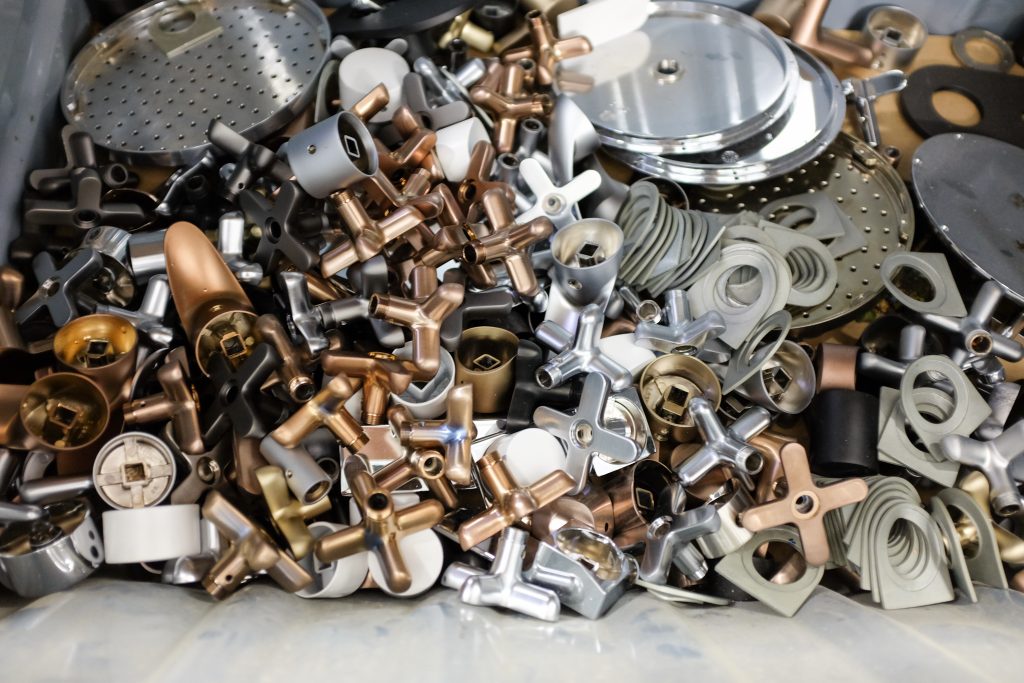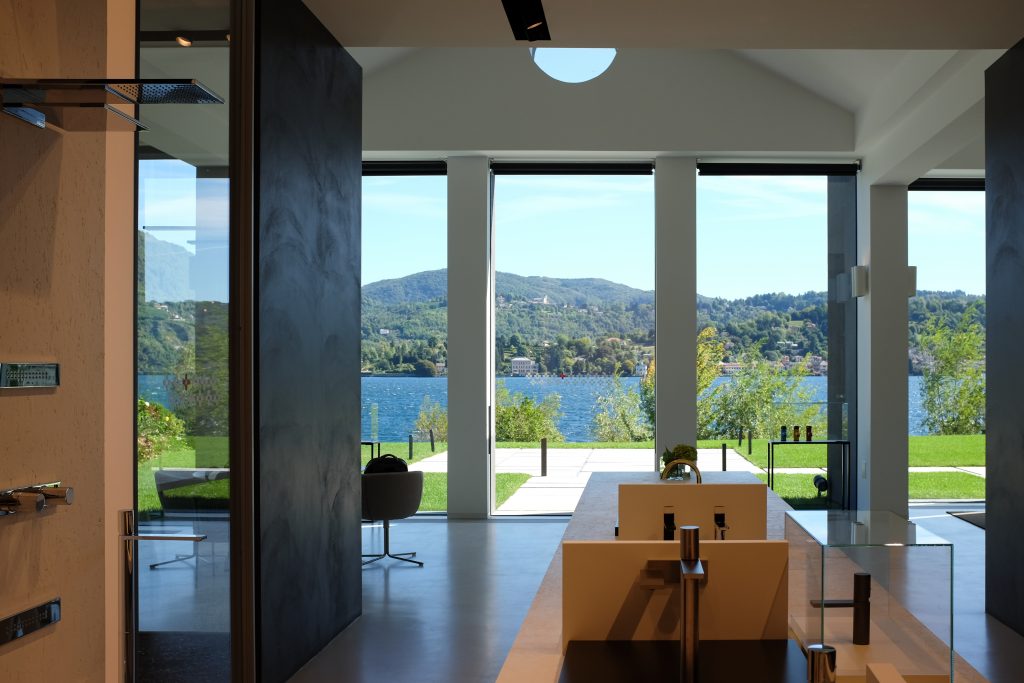Factory Visit: Italian Faucet-Maker Fantini
Production and headquarters on the shore of Lake Orta

Located not far from Lake Como and Lake Maggiore, Lake Orta is perhaps the least internationally known of Northern Italy’s lakes. But it’s here—in the small village of Pella, directly on the lake’s shore—that the Fantini company can be found. The lake is intrinsic to the company, and its employees. Fantini has been making faucets, showers and accessories here since 1947 and is deeply rooted in the area—also known as the “taps district.”
However, the region’s early beginnings in metalwork pertain to something quite different. “The historical origins of the productive district in which we find ourselves are linked to the foundries of bells,” Riccardo Conti, managing director of Fantini USA, tells us. “The whole metallurgical district ranges from taps, valves, cutlery and household items. It’s located in this area because the expertise in metalworking has its roots in bronze castings for the bells, which goes back to 1400.”

Fantini defines itself an “Italian design factory.” The relationship with designers has always been at the core of their process thanks to the collaboration with the likes of Enzo Mari, Matteo Thun, Piero Lissoni, Naoto Fukasawa and others. At the same time, many of the most successful products were designed by not-so-famous names—including the brand’s most iconic product, I Balocchi, created by Davide Mercatali and Paolo Pedrizzetti in 1978.
CEO Daniela Fantini likes to tell the story of this product, framing it as a symbol of how the relationship between designer and entrepreneur can lead to unexpected success. “A dear friend introduced my father Giovanni to two architects who had just graduated. He asked them to design a faucet. They presented many projects that very much looked like those already in our catalog, but also a peculiar pop tap—a bit Disney,” he explains.
“During their presentation, it was placed at the bottom of their folder because they feared it was too much, but when my father saw it he jumped on his chair. We had to introduce color in our products, and that led to every sort of experiment, like crushing plastic in a coffee grinder in our kitchen,” he adds. As a result, the intuition and perseverance of Giovanni led to a redefinition of the company. Eventually the collaboration with Mercatali and Pedrizzetti led to the creation of another commercial success, Calibro, part of MoMA’s permanent collection since 1982.

“The faucet has its complexities,” explains Daniela, “such as its small scale and several functional aspects. Innovating can be complex here, because the cartridge—the heart of the tap—can be shrunk but it must maintain certain technical characteristics. We must find designers who want to question themselves, who will dedicate time to the product.” Not every designer is capable of this.

Further, teamwork is essential to Daniela’s vision. “You can build such relationships over time,” she says. “We don’t have external art direction so the search for new designers is a constant effort. And then the very nice thing is that you really work together. This is very important, because the designers are really the antennas to consumers, and we are the element that holds the knowhow. When the entrepreneur becomes the link for the designer and consumer, when we really work together—this is where successful products are born.”

The Fantini factory is incredibly silent and feels like a laboratory rather than a production site. Several elements come from neighboring companies, but are assembled here in Pella. Every single piece is tested: before, during and after assembly. On a technical note, only cartridges and aerators are standard, while every other element is custom-designed and made. Since Fantini’s market is global and reaches 65 countries, faucets and showers are made from different alloys that can meet local requests and regulations. Hoses vary quite often, and as a result there is no real standard production, but several small orders that can change according to the final destination.

Fantini products are mainly for domestic use, but they are also present in several prestigious developments all over the world, such as NYC’s Baccarat Hotel, Milan’s TownHouse Hotel, Seoul‘s Lotte World Tower and beyond. For grand projects like these, existing styles are customized or new pieces are completely custom-designed.

As for sustainability, some years ago the company chose to apply the Water Appliance Standards as defined by the California Energy Commission—not just for the American market, but for every single product. Conti explains, “We have chosen to adapt to the California regulations because they demand ever-stronger restrictions on water consumption. It is our choice, which allows us to be ahead of many competitors. Also at the production level, we have decided to go in the direction of sustainability. Producing a tap needs a foundry, printing, chrome-plating and so on. In our area we are fortunate to have expertise at all the different stages of processing but we have made a choice for strategic outsourcing. For example, once chrome-plating was done here, on the lake. Now we run it in with an external specialist company, so we have drastically reduced waste and increased the quality level thanks to their expertise.”

In collaboration with CNR (the Italian National Research Center), Fantini financed the SAILING project, a scientific and photographic mission aimed at monitoring the quality of the waters of Lake Maggiore and Lake Orta. “The spirit of the lake inspires us,” continues Daniela. “Being lake people means being people with their feet resting on the ground, proceeding step by step, maybe with a slow but continuous pace. Here the atmosphere is so peaceful that it inspires products that are slightly ‘out of time’—products that have inside of them a certain amount of calm, tranquility and elegance. A bit like the people of the lake.”

The latest lake-oriented project has been the redesign of the lakefront factory and headquarters. Based on the restoration and integration of old buildings, the renovation was led by Lissoni Associati Milano. The result is stunning and incredibly harmonious, inside and outside. From the offices and showroom, the views on the lake and the San Giulio Island are marvelous. Thanks to the clever use of color and integration with vegetation, the buildings have become virtually invisible from the opposite shore and from the island. This Fantini’s gift to the lake: maintaining its spirit and its unique natural landscape.
Images by Paolo Ferrarini











